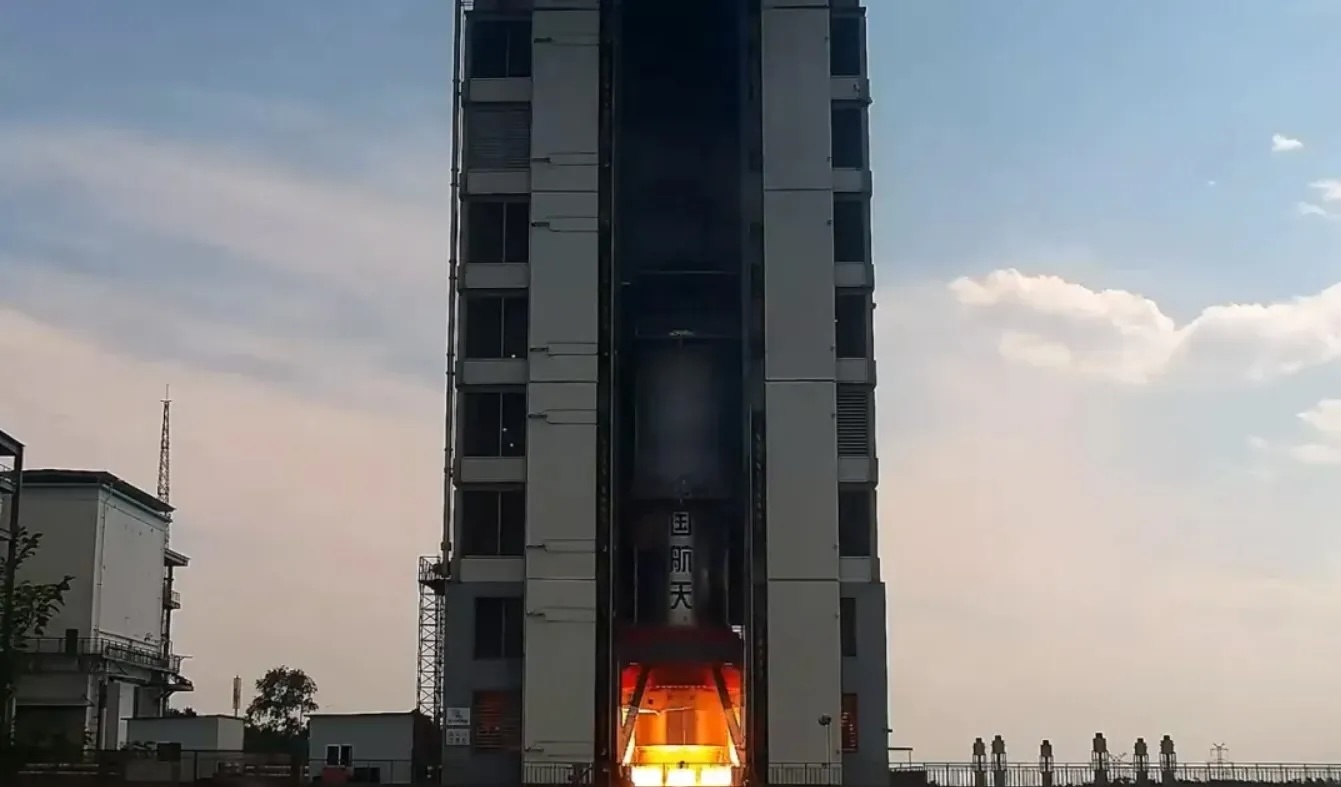8.11.2024

A static fire test of a Long March 10 first stage test article in Beijing, June 14, 2024. Credit: CASC
HELSINKI — China’s Long March 10A rocket is set to have its first flight in 2026, in what will be a crucial step in the country’s efforts to get astronauts on the moon.
A model of the Long March 10A, a single-core rocket for launching crew, is set to be unveiled at the Zhuhai Airshow in southern China, due to open Nov. 12. The rocket is set to have its debut launch in 2026, according to a Nov. 5 report from Science and Technology Daily, an official Chinese ministry newspaper.
The 67.4-meter-long, 5.0-meter-diameter Long March 10A will be used to launch a new generation crew spacecraft to the Tiangong space station in low Earth orbit. It will be capable of lifting 14,200 kilograms to LEO when recovering the first stage. The rocket will be 66.4-meters-long when used to launch cargo missions to Tiangong.
The debut launch of the Long March 10A will be a key step for larger ambitions. A three-core Long March 10 is in development as a crucial pillar in China’s plans to put astronauts on the moon before 2030. The Long March 10 lunar variant will be 92 meters long and be able to launch 27 tons into trans-lunar orbit.
Two Long March 10 launches will be used to get astronauts to the moon and back. One will launch a crew spacecraft, named Mengzhou, and another will launch the lunar lander stack, named Lanyue. The two spacecraft stacks will rendezvous in lunar orbit.
The mission plans for a pair of astronauts to spend six hours on the lunar surface before rejoining their colleague in lunar orbit and returning to Earth.
NASA currently aims to land humans on the moon once more with Artemis III no earlier than 2026. That mission faces potential additional delays, however.
The Long March 10 is being developed by the China Academy of Launch Vehicle Technology (CALT) under main space contractor CASC.
Developing the three-core variant will however present new challenges, and will be a rocket configuration so far unseen in China. Challenges will likely include the increased size and complexity of the launch vehicle and its aerodynamics. China’s current largest rocket is the 5.0-meter-diameter Long March 5. Other hurdles could include engine alignment and synchronization and landing, recovery and reuse.
CALT performed a successful static fire test of a Long March 10A first stage test article in June.
Long March 9 evolution
Also on display at Zhuhai will be a model of the Long March 9, which will be China’s rocket for launching space infrastructure, including to the moon. Images on Chinese social media Sina Weibo and reported by Ars Technica show a model on display with a reusable upper stage, akin to the SpaceX Starship.
Designs and models for CALT’s Long March 9 have evolved in recent years, from an expendable kerosene-fueled 10-meter-diameter rocket with four 5.0-meter-diameter side boosters, to various methane-fueled designs for reusability.
There are also variations in models displayed, with CASC last year exhibiting a graphic of a expendable design at the International Astronautical Congress in Azerbaijan, while China’s Deep Space Exploration Laboratory (DSEL) offered a development pathway from first stage reusability to the full Starship-like version of the Long March 9.
A recent slide attributed to veteran Long March designer Long Lehao details a 10.6-meter-diameter Long March 9 powered by 30 YF-215 engines, and a targeted first launch around 2030.
The rocket will be used to launch modules, infrastructure and components for the International Lunar Research Station, which China intends to start constructing in the early 2030s.
Also expected to be on display at Zhuhai will be the modified Long March 8 rocket. It is due to have its first flight later this year from a new commercial spaceport near Wenchang Satellite Launch Center. Both the rocket and the commercial pads are part of Chinese efforts to increase its launch rate.
Quelle: SN
